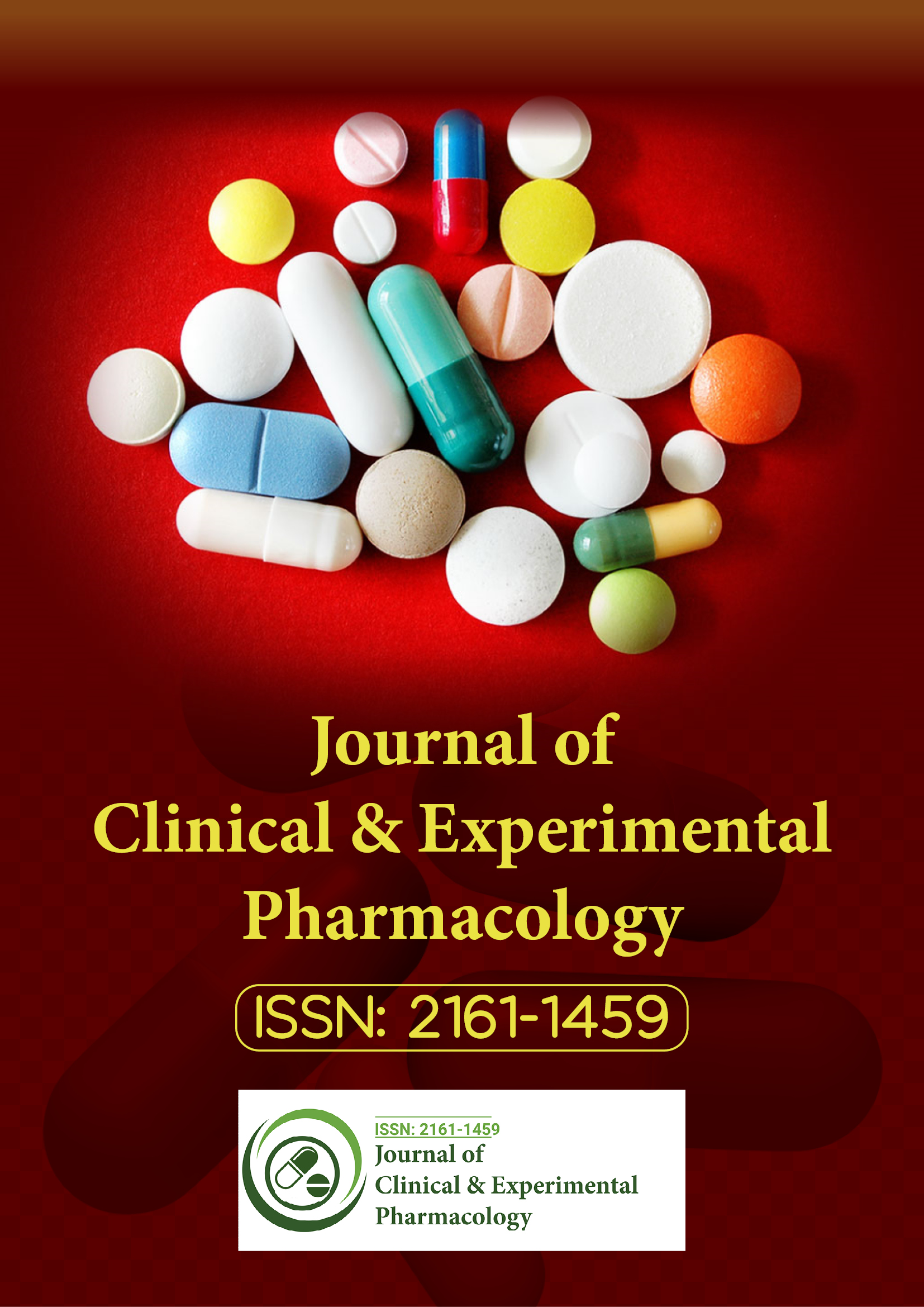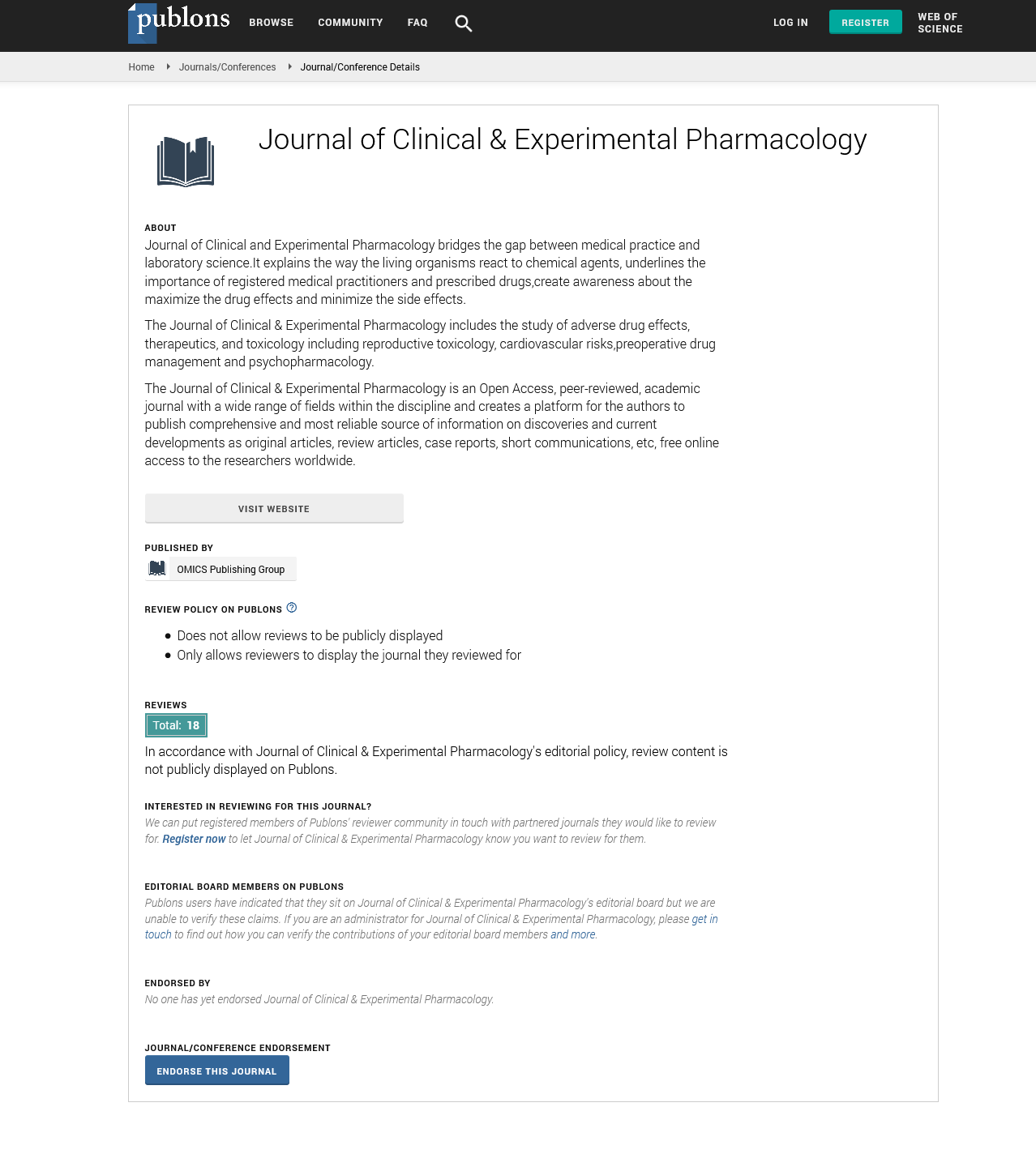Indexed In
- Open J Gate
- Genamics JournalSeek
- China National Knowledge Infrastructure (CNKI)
- Ulrich's Periodicals Directory
- RefSeek
- Hamdard University
- EBSCO A-Z
- OCLC- WorldCat
- Publons
- Google Scholar
Useful Links
Share This Page
Journal Flyer

Open Access Journals
- Agri and Aquaculture
- Biochemistry
- Bioinformatics & Systems Biology
- Business & Management
- Chemistry
- Clinical Sciences
- Engineering
- Food & Nutrition
- General Science
- Genetics & Molecular Biology
- Immunology & Microbiology
- Medical Sciences
- Neuroscience & Psychology
- Nursing & Health Care
- Pharmaceutical Sciences
Cardiovascular protective effects of Casearia sylvestris Swartz in Swiss and C57BL/6 LDLr-null mice undergoing high fat diet
World Congress on Pharmacology
July 20-22, 2015 Brisbane, Australia
Arquimedes Gasparotto Junior
Scientific Tracks Abstracts: Clin Exp Pharmacol
Abstract:
In this study, was shown the cardioprotective effects of the methanolic extract obtained from Casearia sylvestris (MECS) using Swiss and C57BL/6 LDLr-null mice undergoing high fat diet (HFD). Dyslipidemia and atherogenesis were induced by the administration of HFD for 4 weeks. The MECS was administered orally at doses of 250 and 500 mg/kg, for two weeks, starting from the 2nd week of HFD. The gain in body weight and systolic blood pressure (SBP) were measured weekly over the four week study. At the end of the experiments the levels of triglyceride (TG), total cholesterol (TC), high-density lipoprotein (HDL-C), low-density lipoprotein (LDL-C) and very low-density lipoprotein (VLDL-C) were measured. Aldosterone, vasopressin and angiotensin converting enzyme (ACE) activity were also evaluated. The renal function, atherogenic index serum (AIS) and in vitro antiplatelet activity were investigated. Additionally, histopathological analyzes were performed to determine the intimamedia thickness (IMT) and intima media ratio (IMR) in aorta samples. The HFD induced dyslipidemia and structural changes in the aortic wall, including raising of the systolic blood pressure in LDLr-null mice. In addition, we observed an increase in lipid peroxidation accompanied by a reduction of serum nitrite. The treatment with MECS was able to prevent the increase of SBP, TC, LDL-C, VLDL-C and triglycerides levels and increase HDL-C in Swiss and LDLr-null mice. These effects were accompanied by a significant reduction in oxidative stress. Moreover, AIS, IMT and IMR were significantly reduced in MECStreated mice, and the extract was able to reduce platelet aggregation in vitro.
Biography :
Arquimedes Gasparotto Junior has completed his PhD at the age of 35 years from Federal University of Parana and Postdoctoral studies from Federal University of Santa Catarina. He is a chief researcher in preclinical pharmacology and Associate Professor of medical school of the Federal University of Grande Dourados, Brazil. He has published three books and more than 25 papers in reputed journals and serving as an Editorial Board Member of repute.

